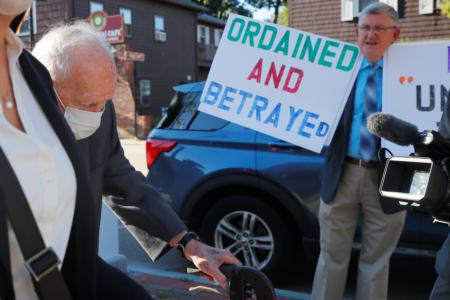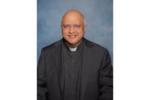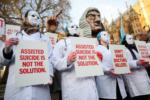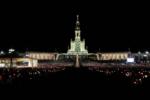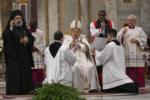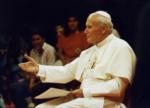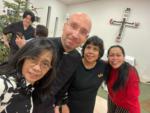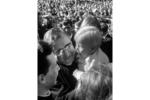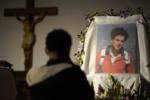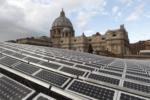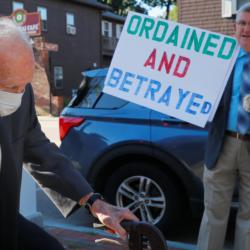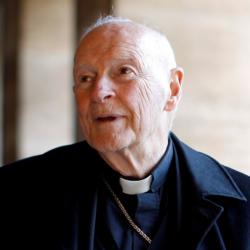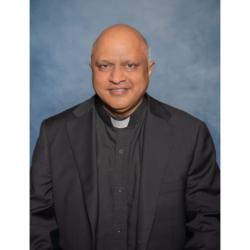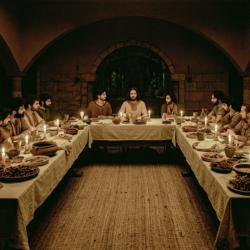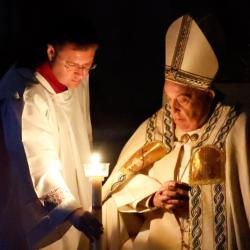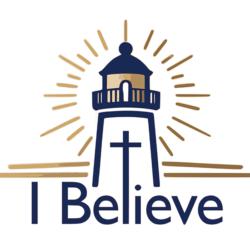Our land and Our Lady
Ever since Columbus' journey to the New World aboard the Santa Maria, and the English Catholic colonists landing on Mary's Feast of the Annunciation, March 25 in the year 1634 in a place they named Maryland, two years before our Puritan forefathers founded Harvard College, our land has had a special connection to our Lady. This week we celebrated the feast of her Queenship on Aug. 22, a week after the feast of her Assumption body and soul into heaven.
Even though our U.S. Constitution forbids titles of nobility, its injunctions don't apply to the after-life, or to our life of religion. (After all, the First Amendment forbids our government from "establishing" a religion.) Jesus is our king, and his mother Mary is our queen, and also our mother. We want to honor this greatest of the saints, and to go to her for help.
Indeed, here in Boston we have two basilicas dedicated to Mary, one in Orient Heights to Our Lady Queen of the Universe, with a 35-foot statue overlooking Logan Airport that is often visible when flying in and out of Boston. The other is beautiful Redemptorist Mission Church, Our Lady of Perpetual Help, on Mission Hill, where the image of our Lady of Perpetual Help, a copy of the original in Rome, has been venerated since 1878.
I'm originally from Washington, D.C., and I have fond childhood memories of May Processions in our parish church of St. Mary's in Rockville, Md.; and also of visiting the Basilica of the National Shrine of the Immaculate Conception, in the Brookland section of Washington, next to Catholic University. My mother grew up in that area, a kind of Catholic enclave that included the Franciscan Monastery which has replicas of shrines in the Holy Land. (She also went to Trinity College, next door to Catholic University.) Nowadays, many pro-lifers who are Catholic stop at the National Shrine for a Mass or a visit during the annual March for Life on the anniversary of Roe v. Wade.
A new book, Thomas A. Tweed's "America's Church: The National Shrine and Catholic Presence in the Nation's Capital," published by Oxford University Press in 2011, tells the story of the creation and building of the National Shrine to Mary in Washington. In 1846, our country's bishops named Mary under her title of the Immaculate Conception as patroness of the United States. This was eight years before Blessed Pius IX formally proclaimed the dogma of the Immaculate Conception in 1854, and 12 years before Mary appeared to St. Bernadette at Lourdes in France in 1858, telling her that "I am the Immaculate Conception."
The National Shrine is a wonderful and inspiring story of faith. Bishop Thomas J. Shahan (1857-1932), then rector of Catholic University, convinced Pope St. Pius X at a private audience in 1913 of the merits of the project, and in 1920 James Cardinal Gibbons laid the cornerstone. The beautiful lower Crypt church was constructed in the 1920s, with contributions from people in the pews around the country; but the Great Depression and World War II halted further building until the 1950s, when the huge Byzantine Romanesque Upper Church was added. Great figures of American Catholicism like Dorothy Day, founder of the Catholic Worker Movement, and Bishop Fulton J. Sheen, the outstanding Catholic evangelist and media personality, both of whose causes of canonization are underway, made important visits to Mary's Shrine.
Over the decades since, chapels and artwork and decoration have been added, and both John Paul II and Benedict XVI visited America's Church on their visits to the nation's capital in 1979 and 2008, respectively. The various ethnic groups that make up the Catholic Church in this country are virtually all represented with their Madonnas and chapels, most recently the Filipinos and African-Americans. My personal favorite is the mosaic chapel dedicated to our Lady of Guadalupe. There are images of America's saints, like St. Elizabeth Ann Seton, St. John Neumann, and St. Frances Xavier Cabrini.
The shrine is apparent when passing through Union Station by train or metro. It, like the Episcopalian National Cathedral, or for that matter the U.S. Capitol itself, is built on one of Washington's many hills. While its huge size and style were the object of some criticism, over the years it has become a much-loved and important place of pilgrimage for natives of and visitors to Washington. Don't miss it on your next trip to the Nation's Capital. For a Catholic, it is a must-see, like going home to see your mother.
Dwight G. Duncan is professor at UMass School of Law Dartmouth. He holds degrees in both civil and canon law.
